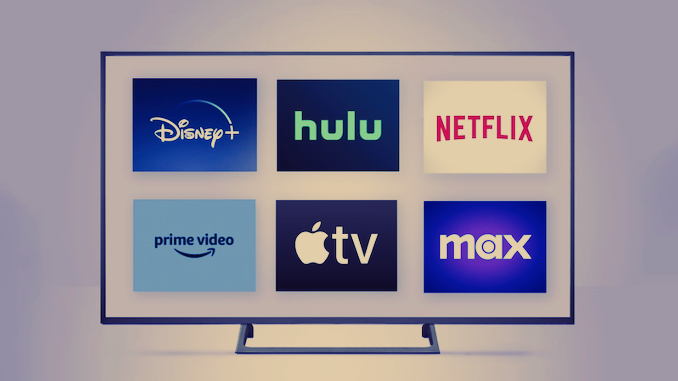Chasing Netflix: How the Major Media Companies Stack Up in Subscribers, Revenue, and Challenges [Part One]

Media giants in the highly competitive streaming market are grappling with subscriber churn, rising content costs, and profitability. As they transition from traditional models to streaming, these companies face increasing pressure to prove the long-term sustainability of their digital transition.
Legacy media companies are leveraging their vast content libraries to stay competitive while pursuing the ultimate goal: profitability. While some have made progress toward profitability through cost-cutting, bundling, and ad-supported tiers, others are still struggling to close the gap with Netflix.
With pressure from Wall Street mounting on public media companies whose stocks have plummeted and the battle for subscribers intensifying, streaming platforms must adapt.
The following article series looks at how the major streaming services compare in terms of financial performance, subscriber numbers, and the unique strengths and challenges each faces in the ever-evolving streaming industry, beginning with a survey of the overall market before reviewing the major streaming platforms in turn.
The Challenge of Profitability in an Increasingly Fragmented Market
The drive toward profitability is the key challenge facing every streaming platform today. With its diversified revenue streams and international growth, Netflix remains the most profitable player in the market. However, legacy media companies are closing the gap through content management, pricing strategies, and ad-supported offerings.
For instance, Disney posted its first combined streaming profit in 2024, mainly due to ESPN+’s success. Paramount+ claims it will reach profitability by 2025, but with continued management woes, these projections are doubtful. However, platforms like Peacock and Warner Bros. Discovery (WBD) face significant hurdles, with their most recent financial reports showing substantial losses.
Despite Netflix’s dominance, competitors are successfully carving out niches by using their content libraries to their advantage. For these companies, the road to profitability will depend on their ability to balance content costs, grow their subscriber bases, and optimize revenue through licensing and bundling.
Persistent Weakening Trends Among Streaming Leaders
The competition among leading streaming platforms is tightening as shifts in overall satisfaction challenge the dominance of top players. Netflix, along with previous leaders Max and Disney+, is now under pressure across key areas like content and engagement, reflecting changing customer perceptions of value.
According to Whip Media’s 2023 U.S. Streaming Satisfaction Survey, Netflix is seeing a steady decline in most satisfaction metrics, although it still maintains top positions in user experience and programming recommendations. Max and Disney+, which ranked #1 and #2 in customer satisfaction in 2022, are now facing similar challenges, with pressure mounting across content and engagement metrics, signaling a shift in how customers perceive the value of these leading services.
While Netflix grapples with a prolonged decline in subscriber satisfaction, Disney+ and Max are also entering a phase of increased uncertainty due to changing economic conditions and evolving consumer preferences.
Meanwhile, mid-tier platforms such as Apple TV+, Hulu, Peacock, Prime Video, and Paramount+ are gaining ground. These services are increasing overall satisfaction, driven by improved content quality, programming variety, and enhanced user experiences.
Content is King: Leveraging Libraries to Challenge Netflix
Unlike Netflix, which increasingly relies on original content with a mixed track record, competitors like Disney, WBD, Paramount, and NBCUniversal have massive content libraries spanning decades. These legacy companies are revisiting the old syndication model to generate additional revenue from their extensive content libraries. By opening multiple monetization windows—whether through licensing deals, ad-supported streaming tiers, or syndication—companies like WBD, Disney, NBCUniversal, and Paramount can increase revenue streams while extending the lifespan of their valuable content.
They can generate revenue by leveraging their iconic titles and franchises through exclusive and non-exclusive licensing deals, strategic windowing, and syndication. For instance, WBD has used popular series like “Criminal Minds” across various platforms, generating substantial revenue through strategic licensing deals. Similarly, Disney’s vast catalog of franchises like Marvel and Star Wars, demand for which is decreasing significantly, allows it to boost engagement and subscriber retention across all its other platforms.
This model boosts audience awareness and generates long-term value for companies heavily invested in content creation. Netflix, which relies predominantly on original programming, lacks the same ability to capitalize on decades-old syndicated content, giving its competitors an edge in this area. That being said, Netflix, which has historically prioritized exclusivity, has hinted at potential shifts, suggesting that external licensing could be a viable strategy, much like its eventual embrace of advertising, which it denied for years.
Demand Share Favors Traditional Content Producers
Demand share, the proportion of viewer demand a company’s content commands, is a vital metric for streaming platforms. Currently, Disney commands 19% of the U.S. demand for series, with WBD at 18% and Paramount at 12%. These numbers reflect the power of these companies in driving licensing deals and demand higher fees in negotiations.
While Netflix leads in subscriber count, the extensive libraries of these traditional media companies give them a distinct advantage. By monetizing legacy content through licensing, Disney, Warner Bros., Paramount, and NBCUniversal can continuously generate revenue from shows and films that Netflix cannot replicate with its current business model.
Source:filmtake

熱門頭條新聞
- Submissions for 2025 Films are Open–ANNECY 2025
- Victura Introduces the World’s First Documentary Video Game
- Marvel Rivals Unveils Moon Knight Set to Join Launch Roster of All-Star Characters on December 6th
- A global business space for Latin American Animation projecting itself to the world
- Best Cinematography: The Digital Reign And Film’s Revival At The Oscars
- VIGAMUS IS EVOLVING: INTRODUCING GAMM – GAME MUSEUM
- Deadline of Reallusion’s 2024 Animation At Work Contest: January 7
- Nintendo to open new Donkey Kong area in USJ in December
